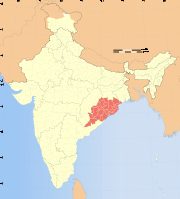 More than a million NGOs are reported to be in India. Most of the NGOs are running on funds. Can the Indian NGOs work on a different paradigm? Can NGOs be self-sustainable groups while at the same time keeping the vision intact? There seems to be a way- partner with the corporates. This article by Jerry Thomaslooks at that paradigm which many Christian NGOs can benefit.
More than a million NGOs are reported to be in India. Most of the NGOs are running on funds. Can the Indian NGOs work on a different paradigm? Can NGOs be self-sustainable groups while at the same time keeping the vision intact? There seems to be a way- partner with the corporates. This article by Jerry Thomaslooks at that paradigm which many Christian NGOs can benefit.
Until now, corporate consumers meant those who occupied tier 1, tier 2 and tier 3 of the economic pyramid. Since the population at tier 4 – also known as Bottom of the Pyramid (BOP) – was considered to be without any purchasing power, the consumers at this layer of the pyramid were treated as a liability for the society and therefore, their needs and concerns were largely ignored. Eventually, it was left to the NGOs to address the needs of the BOP population. The corporates and NGOs remained two mutually exclusive institutions with apparently antithetical goals – Corporates for profits and NGOs for helping the poor without any profit motive. With the advent of much drummed liberalization, privatization and globalization (LPG), whose benefits largely excluded those at BOP layer, the division not only widened but also created suspicion between Corporates and NGOs.
Attempts have been made through the practices of Corporate Social Responsibility (CSR) to channelize the profits of corporates to alleviate poverty. Though this process helped many corporates to donate much to the BOP through NGOs, its success was not measured properly. The Corporate-NGO relationship at best remained as the one between a donor and a receiver. CSR was again criticized as a fashionable deviation from the corporates’ core competencies by a few capitalist apologists. Nobel laureate economist, Milton Friedman wrote, "There is one and only one social responsibility of business–to use it resources and engage in activities designed to increase its profits so long as it stays within the rules of the game, which is to say, engages in open and free competition without deception or fraud" ('The Social Responsibility of Business is to Increase its Profits; The New York Times Magazine, September 13, 1970).
However, all this is going to change if the new thinking among corporate strategist has takers. Corporates and NGOs have a chance to partner combining the apparently contradictory goals: to earn profits while eradicating poverty!
BOP Recasted: Enter Corporates
The corporates that catered only to the top three tiers of society soon found themselves in a precarious situation: The top three tiers of market got saturated, and unrest began from the tier four section of the society. Stagnating markets and widening gulf between the rich and the poor compelled corporate strategists to think about the possibility of an all inclusive capitalism which eradicates poverty and creates profit. Corporate Strategist CK Prahalad asked, "Why can't we mobilize the investment capacity of large firms with the knowledge and commitment of NGOs and the communities that need help? Why can't we co-create unique solutions?" A solution that helps corporates, NGOs and BOP! This question led Prahalad to further research which resulted in his epoch-making book The Fortune at the Bottom of the Pyramid. If his answers are in the right direction, then there is much in it for the Corporates and NGOs to celebrate! For the corporates there is a huge market to be tapped and for the NGOs the much needed financial support might finally be in sight.
Prahalad begins The Fortune at the Bottom of the Pyramid by arguing that much of dominant understanding of BOP such as they have no money, they are not brand conscious, are not connected, and will not accept new technologies, are empirically false. For instance, in Dharavi – Asia's largest slum on the outskirts of Mumbai, 85% people own a television set, 75% own a pressure cooker and blender, 56% own a gas stove, and 21% have telephone connections. Moreover, the poor in Dharavi pay 600 to 1,000 percent interest for credit from money lenders whereas a bank with access to this population could have given credit at below 25 percent. After busting the myths of BOP, Prahalad argues that with the right mix of product innovation, process innovation, better price performance and advanced technology, corporates can reap profits and simultaneously eradicate poverty. To substantiate his point he cites the examples of corporates like Hindustan Lever Limited (HLL), ICICI Bank, Aravind Eye Hospital (AEH), etc. HLL, by innovatively producing and pricing Annapurna Salt in rural India, not only gained a market share of 35% but also addressed the problem of Iodine Deficiency Disorder (IDD) in more than 70 million people in India. However, to effectively market this product, HLL utilized the help of women in Self Help Groups (SHGs) through its Project Shakti.
Similar is the story of ICICI Bank and Aravind Eye Hospital, too. While ICICI Bank manages and lends credit to more than 20,000 of its customers in rural India by six employees through SHGs, one doctor in AEH conducts more than 1500 eye surgeries (national average is 300) in rural India with the help of volunteers and advanced technology. Going ahead, Arun Maira, Chairman of The Boston Consulting Group (India), says in his article 'What will it take to create a Market out of India's Poor', for India to develop production, manufacturing should be done by the masses than mass production of things. Citing Keggfarms, one of the pioneers of modern poultry farming in India as an example he writes, "To involve the masses in the poultry industry, both the supply chain, beginning with the supply of day-old chicks to intermediate brooders who rear them for one month before passing on the young birds to women in villages for the birds to mature, as well as the sales chain beginning with the women in the villages who have birds and eggs to sell (after retaining what they want for their family's consumption), were designed to include many cooperative enterprises of villagers, NGOs and others" (Business Today, January 15 2006). Taking cue from this, companies like P&G and Unilever, which are struggling to grow in the developed markets have started focusing on BOP. Similarly, Public Sector Banks (PSB
s) which are finding it hard to fend off competition from the private players are now targeting the BOP layer. In this context, finance minister P Chidambaram urged the PSBs to launch no-frills accounts with very low minimum conditions so as to serve the BOP consumers (Chartered Financial Analyst, January 2006). All this shows that the BOP is the next stop for the corporates which are struggling to set their foot in the developed markets.
NGO Corporate Partnership: A Win-Win Situation
Granting that opportunities galore at the BOP for corporates, one might still wonder why the corporates should enter into partnership with NGOs and vice-versa. As for corporates, though they have the resources to spend, they don’t have the much required expertise and knowledge to serve BOP.
Stuart L Hart and Ted London in their article 'Developing Native Capability: What multinational corporations can learn from the base of the pyramid' write, "The base of the pyramid presents unique challenges for MNCs-it violates nearly every assumption associated with successfully serving the top of the pyramid. In fact, the biggest challenge for MNCs may have less to do with technology, intellectual property, or rule of law, even though these issues have dominated most of the work relating to emerging markets till date. Instead, the fundamental challenge may be of business model innovation-breaking free of the established mindsets, systems and metrics that constrain the imagination of incumbent firms" (Stanford Social Innovation Review, Summer 2005).
Nike’s attempt to manufacture and distribute 'World Shoe' to BOP markets in China failed miserably, though the products were relatively low priced. The contract manufacturers and distributors of Nike's high-end products showed little interest in the low-end products as the profit was very marginal. Moreover, there was a challenge to make the product suitable for rough conditions, something common to BOP. In contrast, Honey Care Africa in Kenya created a partnership with private sector, NGOs and local community exploiting the core competencies of each – marketing skills of private sector, microfinance experiences of NGOs and the entrepreneurship of local community. By training local farmers in using advanced technologies for generating better and bigger quantity of honey and helping them to procure these technologies through microfinance, Honey Care created a sort of revolution in the local community. At the same time, it achieved a remarkable feet of becoming the largest producer of high-quality honey in East Africa.
All this made Hart conclude, "I recognize that local communities and firms are the critical knowledge bearers. Any expectation that the MNCs can go off on their own and create economic opportunity for the poor is crazy. The only way is by partnering with local firms and NGOs" (Business, growth and the good society, Indiatogether.org).
Similarly, NGOs that are enterprising, bearers of local knowledge and have earned the trust of local communities are uniquely positioned to gain from the new paradigm in the corporate strategy. The resources to build complex commercial infrastructure for the BOP, leveraging the transfer of knowledge across the different tiers and from one part of the world to another and even to bridge various actors at the BOP, MNCs are best positioned. Prahalad and Hart write, "Without MNCs as catalysts, well-intentioned NGOs, communities, local governments, entrepreneurs, and even multilateral development agencies will continue to flounder in their attempts to bring development to the bottom. MNCs are best positioned to unite the range of actors required to develop the Tier 4 market" (The Fortune at the Bottom of the Pyramid', Strategy + business, issue 26). The scope of the partnership can range from innovation by combining traditional knowledge and modern technology to local needs, educating and training the people, marketing the product, micro financing etc. Or in other words, Corporates and NGOs can partner at any stage depending on their core competencies.
Road Ahead: Caution is the Key
Though the NGO-Corporate partnership is mutually beneficial, both will have a tough time in entering into partnerships. Hart says "Trusting relationships between MNCs and NGOs may take time to build. A significant amount of time and effort is required at the front end to develop and sustain partnerships" (Business, growth and the good society, Indiatogether.org).
Moreover, past experiences of NGO-Corporate ventures like cause-related marketing, highlight a few risks involved in this partnership. Alan R Andreasen, professor of marketing at the School of Business, Georgetown University points out that reduced funds from the traditional donors, loss of organizational flexibility and even loss of credibility if entered a partnership with tainted companies can happen. However, the option is not to avoid partnership but carefully choose them. Andreasen writes "If non-profit managers have done their homework, they will understand all the ways in which nonprofits add value to corporate partners, they will have assessed their organizations' strengths and weaknesses, they will have scoped out corporations who might be a good fit ant they will be able to demonstrate to a potential corporate "customer" how the relationship will complement the corporation's long-term strategy" (Profits for Nonprofits: Find a Corporate Partner, Harvard Business Review, Nov 01, 1996).
Leaving aside the past and by carefully planning for the future, if corporates and NGOs come together and build a new partnership, this will truly herald a new era in the efforts to eradicate poverty. NGOs, with their huge expertise in serving in the BOP combined with extensive knowledge of local needs and traditional skills when backed with the financial muscle of corporates can help in eradicating the poverty and earning profits.
{moscomment}





